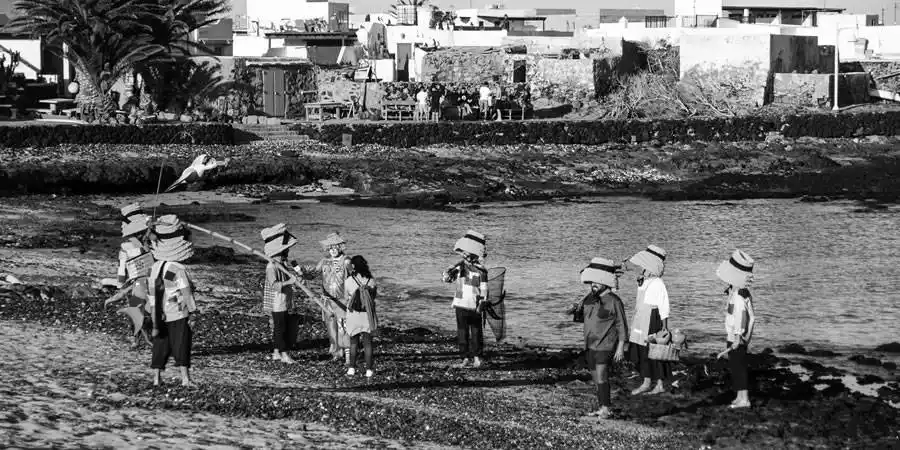
Since time immemorial, La Graciosa has witnessed the arrival and departure of navigators and merchants, playing a crucial role in the history of the Canary Islands.
When Jean de Bethencourt decided to conquer Belle Isle (1402), other navigators had already anchored their ships in these calm waters. Given this island’s position, it’s reasonable to assume that the first expeditions that discovered the Canaries anchored at La Graciosa before any other place in the Archipelago.
One of the most important trade items for the Phoenicians, the Mediterranean naval power, was purple dye, extracted from the lichen orchilla, and La Graciosa was one of the places they reached, challenging the limits of the Pillars of Hercules (the present-day Strait of Gibraltar) to collect this plant, which earned the eastern Canary Islands the nickname “Purple Isles.”
It is also known that European and Berber pirates exploited the safety and shelter provided by La Graciosa’s beaches for centuries during their raids across the Canary Islands. So much so, that their continuous presence inspired the legend of a treasure hidden on Las Conchas beach by an English ship in the early 19th century after being chased by a pirate ship.
More recently, La Graciosa played a fundamental role in the survival of Lanzarote’s people, especially after the devastating Timanfaya eruptions that ruined vast farmland areas. People brought cattle to La Graciosa in search of grazing and left them free until the summer.
Until very recently, Lanzarote residents visited La Graciosa to gather shearwater chicks, prized for their protein reserve on long voyages to America—a tradition originating from that journey but no longer part of traditional cuisine due to the prohibition on capturing this protected species.
The healthy colony of rabbits imported by the Spanish, the barrilla plant used to extract soda through burning, the cosco used to make gofio, and above all, the abundance of shellfish and fishing were great attractions for Lanzarote’s residents on La Graciosa.
This is the only island in the Chinijo Archipelago that belongs to the Lanzarote Island Council, a decision made by Agustín de Herrera y Rojas, the Marquis of Lanzarote (16th century), who established it “for communal benefit.”
Composed of the island of La Graciosa, the islets of Alegranza and Montaña Clara, Roque del Este, and Roque del Oeste o...
Nevertheless, many attempts were made throughout history to claim possession of the island, including an unsuccessful effort by the U.S. Government in the mid-19th century, aiming to use it as a strategic outpost. However, its status as part of the Teguise municipality since 1812 reflects its importance as communal heritage.
On June 26, 2018, the General Commission of Autonomous Communities of the Senate unanimously approved a historic motion granting La Graciosa the status of the eighth inhabited island of the Canary Islands, moving beyond its designation as a mere islet. This decision marked a milestone in the island’s history and its recognition as an integral part of the Canary archipelago.
However, it’s important to note that this recognition does not fully equate La Graciosa with the other islands in the archipelago. Although it now has the status of a parish island and enjoys legal personality, it remains administratively part of Lanzarote’s Teguise municipality and lacks its own island council, a crucial political body for complete equivalency with the other islands in the archipelago.
Nevertheless, this measure represents a significant step in recognizing La Graciosa as an autonomous local entity. The island has its own budget allocated directly to improving essential public services for its residents, thus strengthening its identity and autonomy within the framework of the Canary Islands.